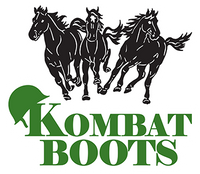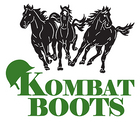Kombat Boots supplements have helped so much with my horses' hooves, coat, and gut health
Natural Yeast Pellets for Horses
The thickness, strength, and growth of the hoof is incomparable!
A domesticated horse has a very inefficient digestive system. Kombat Boots will improve a horse’s digestive function and feed utilization by at least 20% and as much as 45%. You can expect to cut your feed bills down significantly. Your horse will be eating less and getting more nutrition out of their feed.
Almost immediately you will see a change in the manure. Loose stools will firm up and you will see a healthier deposit.
In 3-4 weeks you will see changes in coat and hoof condition. Within a few months, the hoof will be growing 40% – 50% faster. Many unseen changes are also taking place inside the cecum. The yeast cell wall breakdown is producing CO2 which is reducing the lactic acid buildup in muscles during training & racing, giving your horse the competitive edge it needs for superior performance.
We recommend a daily ratio of 1.5 grams of yeast for every 10 lbs. of horse. For example: a 1,000 lb. horse should be fed 150 grams of yeast daily. This is equivalent to two 4 oz. scoops per day. There is no need to change your feeding program; Kombat Boots will simply make whatever you’re currently feeding more digestible. See the back of the packaging for feeding directions for each type of horse.
Kombat Boots is most effective when fed daily dosage in two separate feedings. The correct dosage must be used for the product to work.
- At 2 scoops (8 oz.) per day, a 46.8 lb. box will last one 1,000 lb. horse 93 days.
Testimonials
More Customer Stories
Kombat Boots Information
Download our product information sheet for more information:
Learn More About Kombat Boots
No one “makes yeast.” Yeast is a naturally occurring fungus and is found all around us. There are numerous strains of yeast, most of which are inedible. Some are even poisonous. Yeast is a single cell fungus easily manipulated by nature or by man in a laboratory.
“Bakers” yeast has been around for centuries and is the strain used in the baking process. “Brewers” yeast is a strain of bakers yeast and has been used for brewing alcoholic beverages for hundreds of years. Kombat Boots is made from the residue left over from the brewing process. This residual yeast has been used for hundreds of years in animal feed.
Yeast is one of nature’s “perfect” foods. There are no side effects. Pound for pound, nothing compares with yeast for nutritive value because of its vitamins and minerals.
The benefits of yeast have been known for years, but the problem has always been – how do you get it into the horse? No one, until now, has been able to produce a yeast pellet horses will eat. Most modern feed pellets contain small amounts of yeast. The Kombat Boots pellet contains 70% yeast. Most horses love the apple taste; they will eat the pellets right out of your hand!
Research studies done in the past twenty-five years also confirm the beneficial effects of feeding yeast to horses. Just a sampling of these studies shows the following:
- Improvements in the growth of young horses.
Weanlings fed yeast culture were five kg. heavier and had a 10% faster growth rate than those not fed yeast cultures over a six-month period. Ciro (1991). - Improvements in the aerobic metabolic capacity of horses in training.
Campbell & Glade (1989) reported lower plasma lactic acid concentrations after 35 minutes of exercise and lower heart rates during the first five minutes and last ten minutes of a 35-minute workout for horses fed yeast. - Improvements in a broodmare’s early milk production and increased foal growth.
Mares supplemented with yeast during the first two weeks of lactation produced 35.4 lbs. of milk per day compared with 31.7 lbs. for mares not fed yeast. Glade (1991). Foals of mares fed yeast were 57 lbs. heavier and 3.5 inches taller at the withers at 56 days of age than foals from mares not fed yeast. Glade (1991).
Pelleted Brewers Yeast Additive Available for All Classes of Horses
By Dr. Amy Gill
“A new, completely natural brewers yeast pelleted feed additive named Kombat Boots is now available commercially for feeding to horses. The unique pelleting process used to manufacture Kombat Boots provides an extremely palatable and easy to feed form of brewers yeast. Kombat Boots is composed of 50% brewers yeast and therefore provides 100g of Saccharomyces cerevisiae yeast in an 8 oz serving. Brewers yeast is a good source of protein and amino acids for horses and contains many other macro and micro minerals and B complex vitamins. In the past, numerous scientific studies have demonstrated the beneficial effects of adding yeast to equine diets. Research has shown that adding yeast to the diets of horses can:
- stimulate and stabilize microbial activity in the hind gut
- reduce incidence of colic and ulceration by maintaining pH balance through colonization of healthy microbes throughout the digestive tract
- improve fiber, calcium and phosphorus digestibility
- improve nutrient composition of milk in lactating mares
- improve digestibility and feed utilization in young horses and aged horses
- increase daily gains in growing horses
- enhance athletic performance by improving aerobic capacity
- improve the quality of hair, skin and hoof
One of the most significant effects of adding yeast to equine rations is the ability to help stabilize the hindgut (cecum and colon) bacterial populations and, as a result, also increase nutrient digestibility. Components of the yeast cell wall prevent the colonization of pathogenic microorganisms in the gut, improve the percentages of useful microorganisms in the intestinal tract, boost immune function and strengthen the structure of the gut wall. Yeast also stimulates the growth of bacteria that utilize lactic acid, which helps to lower lactic acid levels in the hindgut, and increase the number of bacteria that are responsible for the fermentation of fiber. A healthy, stable hindgut is imperative for horses to remain in good condition and prevent disorders such as colic, laminitis and other metabolic syndromes. Many performance horses are fed high starch diets (sweet feeds), and these feeds can cause hindgut acidosis (drop in pH), which often dramatically shifts the microbial populations in the hindgut, causing a disturbance. When this happens, the entire hindgut environment is negatively affected, and the products of microbial fermentation (volatile fatty acids, ammonia, lactic acid) are produced in different proportions and concentrations than what is considered normal. Colic and laminitis can follow an episode of acidosis, and this may be occurring on a sub clinical level in certain individuals every time they are fed a meal high in starch. Studies have shown that when yeast is added to the ration it can help prevent rapid changes in the intestinal ecosystem when high starch diets are fed.
Feeding yeast also enhances the activity of fiber digesting bacteria in the hindgut and increases fiber digestibility. Therefore, more efficient use of the vitamins and minerals derived from the forage portion of the diet is noted when horses are maintained on a diet containing supplemental yeast. This is particularly important in the growing horse because calcium and phosphorus are essential dietary minerals needed for proper bone development. Adding yeast to the rations of growing horses also increases nutrient digestibility, which results in higher daily gains.
Some of the phosphorus found in forages is bound to the plant fiber in the form of phytin phosphorus and is not readily digested and absorbed by the horse. Research studies have shown that there is a 20 percent increase in phosphorus availability when yeast is added to the diet. Yeast stimulates the hindgut bacteria to produce the enzyme phytase, which acts to break down the bond between the fiber and the phytin phosphorus, making it readily absorbable from the hindgut.
Lactating mares fed yeast have higher concentrations of sugars, lipids, total proteins, gross energy and amino acids in their milk and their foals have higher average daily gains due to increased availability of nutrients. Supplemented mares also produce more milk, and foals from supplemented mares grew much faster than foals on non-supplemented mares during their first 4 weeks of life.
Older horses will benefit directly from the addition of yeast due to increased fiber digestion and phosphorus absorption from the large intestine, which commonly deteriorates and loses some absorptive capacity due to aging.
Horses in training appear to benefit when being fed a diet with yeast culture, with lower blood lactate levels before and during exercise, and faster clearance of lactate from the blood following exercise than horses not fed yeast. Supplemented horses also had slower heart rates during exercise, indicating an enhanced athletic fitness level. These results indicate that horses fed yeast have less reliance on glycogen during exercise to provide glucose, as a direct result of better utilization of energy produced from volatile fatty acids (VFA’s). VFA’s are one of the products of microbial fermentation that the horse can utilize for energy production. Enhanced volatile VFA production appears to exert a carbohydrate-sparing effect in the exercising horse.”
Kombat Boots is economical to feed.
Extensive Education
Dr. Amy M. Gill completed high school in Chappaqua, New
York and received her Bachelor of Science degree in Animal Science from the
University of Maryland. Following that, she conducted her graduate
studies at the University of Kentucky, receiving a Master of Science degree in
Equine Nutrition and a Doctorate in Equine Nutrition and Exercise
Physiology. Prior to completing the requirements for her doctoral degree, Dr.
Gill spent many years breaking and galloping racehorses and working on the racetrack
as an equine physical therapist. Dr. Gill also was owner/manager of Amber
Lane Farm, Inc. in Versailles KY. The farm services included breeding, foaling,
breaking, sales preparation and representation and rehabilitation.
Broad Equine Experience
As a consultant, Dr. Gill has worked extensively with
several feed manufacturers including Alltech, Inc., Triple Crown Nutrition,
Cavalor, Hallway Feeds, Southern States Cooperative, Renaissance Nutrition,
Milestone Equine, Western Hay and Cargill Animal Nutrition (Nutrena, Agway) and field
nutritionist for Tribute Feeds. Her
services include writing technical bulletins and articles, presenting
educational seminars and performing on-site farm consultations.
Dr. Gill produced a TV show series with Cargill Animal
Nutrition for the satellite channel RFD-TV, writing the copy for and featuring
in several of the episodes. The show focused on several key issues involving
the feeding and management of all types of horses.
Frequent Author
Specializing in growth, metabolic,
immune and exercise related disorders in the horse, Dr. Gill has authored
numerous articles regarding these subjects for publications such as The
Backstretch, The Whole Horse Journal, The Horse, The Holistic Horse, TrailBlazer
and the Thoroughbred Times.
Feeding Directions
Kombat Boots is most effective when fed daily dosage in two separate feedings. The correct dosage must be used for the product to work.
| Foals | 1 Scoop (4 oz.) | Per Horse Per Day |
| Smaller Breeds | 1 Scoop (4 oz.) | Per Horse Per Day |
| Yearlings & Older | 2 Scoops (8 oz.) | Per Horse Per Day |
| Lactating Mares | 2 Scoops (8 oz.) | Per Horse Per Day |
| Drafts | 4 Scoops (16 oz.) | Per Horse Per Day |







